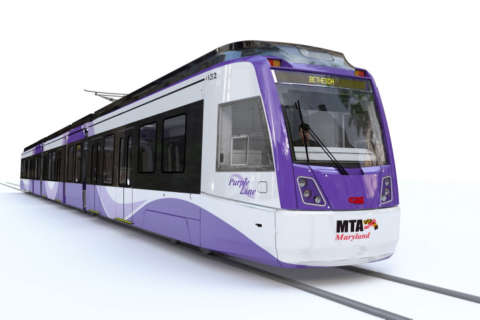WASHINGTON – The Maryland Board of Public Works has approved a contract with a team of private companies to build and operate the 16-mile Purple Line, which officials say will make it easier for commuters to take public transit and will bring business development to Prince George’s and Montgomery counties.
Purple Line Transit Partners, led by Fluor Enterprises, was selected as the contractor. Its proposal estimated that it would cost of $2.61 billion over the course of the 36-year contract to build and operate the light rail line that will run from Bethesda to New Carrollton.
The three-member Board of Public Works includes Gov. Larry Hogan, Treasurer Nancy Kopp and Comptroller Peter Franchot. They voted 3-0 in favor of the contract, which allows the long-discussed transit project to become a reality.
“This is the missing link,” Kopp said of transit options in the Maryland suburbs.
Kopp was concerned that the Purple Line would siphon riders from Metro and Ride On bus but she was convinced to support the project. Transportation Secretary Pete Rahn said the Purple Line would act as a critical link to the region’s transit systems.
“It will feed Metro and I believe it will add ridership to the Metro system because it will provide easy access where previously it didn’t make sense if you were having to take Metro all the way in,” Rahn said.
The light rail line will have 21 stations including four at Metro stations.
Montgomery County has been asked to contribute $210 million and Prince George’s County is expected to pay $120 million toward the project. Additional funds will come from the state and federal government. The total cost of the project is expected to reach $5.6 billion.
Three other proposals submitted were each worth more than $3 billion for the life of the contract, according to board documents.
Construction could begin as early as this year with passenger service expected to start in 2022.
Hogan, who campaigned on and continues to favor road projects over public transit, agreed to move the project forward last summer after dramatically reducing the state’s contribution to the Purple Line. Wednesday, the Republican governor called the project an asset to the region.
“When completed, the 16-mile Purple Line will act as an economic development catalyst across one of the state’s most dynamic economic corridors,” Hogan said.
Franchot said the line would boost the local economy and help lower-income families like Bethesda restaurant workers who live near Takoma Park – communities on the opposite ends of the Red Line.
“This project is a practical step to dealing with some of the economic pain that some of our most economically challenged families feel,” Franchot said.
WTOP’s Kate Ryan contributed to this report from Annapolis, Maryland.





